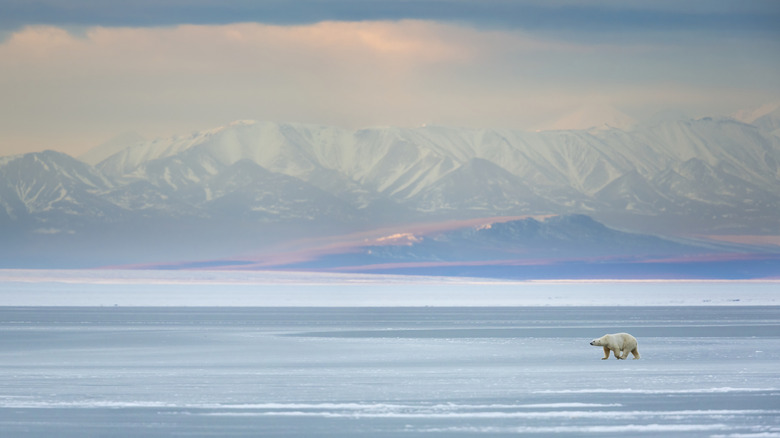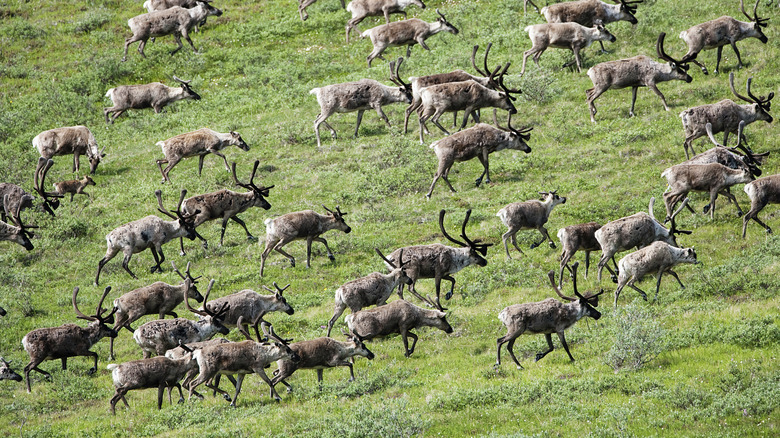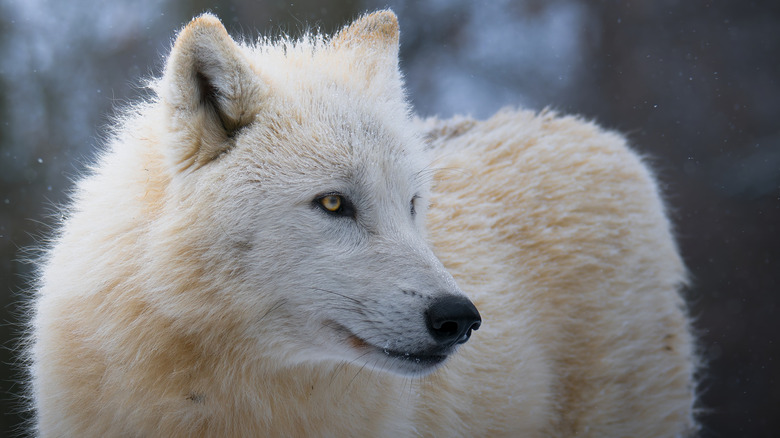'America's Last True Wilderness' Is A Renowned Alaskan Paradise Full Of Wildlife And Pristine Beauty
One of the wildest, most ecologically intact landscapes in the world is situated on Alaska's North Slope, and is home to vast herds of caribou, three subspecies of bears, musk oxen, wolverines, wild sheep and Arctic wolves, among dozens of other mammals, 42 species of fish and about 200 species of migratory birds. The Arctic National Wildlife Refuge is one of the continent's last true wilderness areas, and also home to the Indigenous Inupiat and Gwich'in people, who have subsisted in the high Arctic for thousands of years. The Gwich'in still depend heavily on the 200,000-animal Porcupine caribou herd, which migrates every summer out of the mountains north to the coastal plain to calve and feast on low-elevation grasses and sedges during the short Arctic summer.
Visiting the refuge isn't easy. Generally, a trip to the refuge starts in Fairbanks, where motorists with a very dependable and well-maintained four-wheel-drive vehicle and two spare tires can drive to its western border along the Dalton Highway, which follows the Alaska Pipeline all the way to Prudhoe Bay. This is also the best way to see America's least-crowded national park, Gates of the Arctic. Visitors can also employ outfitters and bush pilots to fly them into established airstrips located deep inside the refuge's interior. There are several tour operators who can provide outfitted trips to the refuge, but visitors should know that a trip to the Arctic is a serious undertaking. Unpredictable weather, wildlife and insects must all be taken into account before heading north, and having an experienced guide should be a prerequisite before making a commitment to see the Arctic National Wildlife Refuge.
The refuge is vast, wild, and targeted for oil and gas drilling
The Arctic National Wildlife Refuge is massive — it encompasses more than 19 million acres of public land. It stretches from the coast of the Arctic Ocean on the north more than 200 miles south over the Brooks Range and includes the boreal spruce and birch forests on the southern slope of the mountains. By comparison, Yellowstone National Park, home to a vibrant geyser basin with a unique ecological environment, encompasses just over 2.2 million acres of protected land. Three of the refuge's rivers — the Wind, the Sheenjek, and the Ivishak — are federally designated as Wild and Scenic Rivers and are home to Arctic grayling and Dolly Varden, a subspecies of char that runs into the rivers in late summer to spawn, just like salmon. The refuge has no roads and no facilities for visitors — a trip to the north is a spartan endeavor, to say the least.
The Arctic National Wildlife Refuge was initially protected by President Dwight D. Eisenhower in 1960, and, at first, it included 8 million acres of fragile Arctic land. In 1980, President Jimmy Carter added 10 million acres to the protected area, bestowed the wild and scenic designation on the area's rivers and renamed the entire thing the Arctic National Wildlife Refuge. Another million acres of protected lands were added in 1983 and 1988, and in 2017, President Donald Trump initiated a formal federal oil and gas program on the coastal plan, a move that Indigenous tribes still oppose.
Arctic wildlife is diverse and plentiful on the refuge
Visitors to the Arctic National Wildlife Refuge include birders, wildlife watchers, hunters and anglers, all of whom come to the far north with the hopes of seeing some of the refuge's more charismatic critters. Along the Arctic coast in the summer, it's possible to see massive polar bears wandering the tundra as they wait for the sea ice to firm up before heading out for the winter, where they hunt seals from the ice floes. Farther inland, barren-ground grizzly bears are present, and, in the refuge's southern mountains, black bears are present, too. Bears aren't the only predators within the refuge — it's also home to the cantankerous wolverine, packs of Arctic wolves and shy and beautiful Arctic foxes. One note: salmon are not typically present on the refuge, so bears in the area don't gather at rivers like they do elsewhere in Alaska, which means there's no way to safely watch bears in their natural habitat like at this little-known observation area.
While the rivers are home to Dolly Varden and grayling, many of the larger pothole lakes on the refuge are home to lake trout, inconnu (the largest whitefish in the world), northern pike and Arctic char. Near the mountains, moose are often seen, and Dall sheep, a wild sheep with curved horns, is a sought-after trophy by hunters the world over. Visitors can see some of these wild animals from the Dalton Highway, but the best way to catch a glimpse of these animals is by hiring an outfitter and venturing into the wild interior of the refuge. Many choose to hike, but others float the refuge's rivers in rafts over a series of days or even weeks. There may be no better wilderness adventure than a well-planned visit to the Arctic National Wildlife Refuge.


